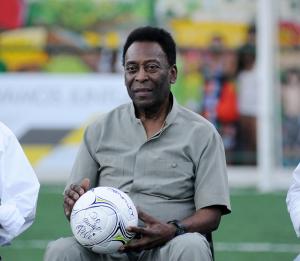The late Pelé Unwittingly Contributed to a Soccer Trend that Has Resulted in Mass Slaughter of Kangaroos Used for Cleats
Hero helped make sport a passion across the world, but perhaps at great cost to Australia's iconic marsupial
As a tribute to Pelé, the major athletic shoe retailers should now move on from sourcing wild animal parts in their soccer wear offerings and embrace 21st-century fabrics and values.”
WASHINGTON, D.C., UNITED STATES, December 29, 2022 /EINPresswire.com/ -- Like so many other individuals, Wayne Pacelle, president of the Center for a Humane Economy1, mourns the passing of the great Pelé, a transformative presence in soccer and one of the truly big names in contemporary global sports, along with Muhammed Ali, Michael Jordan, and Wayne Gretsky.— Wayne Pacelle, president, Center for a Humane Economy
Pelé was an extraordinary figure and humanitarian, but he had perhaps an unwitting “butterfly effect” in driving the sales of kangaroo-based soccer cleats and, therefore, the mass killing of the iconic marsupials and their newborns in Australia. In 1970, he famously scripted a lacing of his soccer cleats on the world stage, drawing interest in the newly designed soccer footwear made from kangaroos by Puma.
Though the Dassler brothers (Rudolph Dassler led Puma, Adolph Dassler led Adidas) had an agreement not to sign Pelé to a shoe contract as it would be too costly, Puma secretly reneged on the “Pelé pact” and with the greatest of fanfare, unveiled Pele’s signature shoe, the Puma King, made of kangaroo skin, in the 1970 World Cup quarterfinal featuring Brazil and Peru. Considered Puma’s finest promotion ever, Pelé was reported to be paid $120,000 to delay the start of the game, bending to tie his boots in the center circle, with the world’s cameras watching.
From that point on, sales of kangaroo-based shoes surged, and they became part of the footwear collection of the major brands in the field. They persist today, driving the killing of 2 million kangaroos, including 500,000 joeys, in their native habitats in Australia for Puma, Nike, Adidas, and several other athletic brands to sell.
Wayne Pacelle issued this statement:
“Pelé was a great man and an extraordinary, once-in-a-century talent in soccer. Almost certainly without ill intention, he did, however, popularize the use of kangaroo-based soccer cleats. Puma, Adidas, and Nike continue to sell these cleats, resulting in the annual slaughter of 2 million kangaroos a year, including 500,000 joeys, in their native habitats. As a tribute to Pelé, the major athletic shoe retailers should now move on from sourcing wild animal parts in their soccer wear offerings and embrace 21st-century fabrics and values.”
Lionel Messi, Kylian Mbappe, and other soccer stars of today performed on the global stage in the 2022 World Cup without lacing up soccer cleats made from the skins of kangaroos killed in the wild in Australia. According to an analysis of all matches, conducted by the Center for a Humane Economy, World Cup players scored 172 goals throughout the competition — and only eight came from players wearing kangaroo-skin cleats.
The Center for a Humane Economy is conducting a global Kangaroos Are Not Shoes campaign to end the use of kangaroo leather in soccer cleats, with a microsite of the same name, www.KangaroosAreNotShoes.org2.
WAYNE PACELLE
Center For A Humane Economy
+1 202-420-0446
email us here
Visit us on social media:
Facebook
Twitter
Other
1 https://www.centerforahumaneeconomy.org
2 https://www.KangaroosAreNotShoes.org

